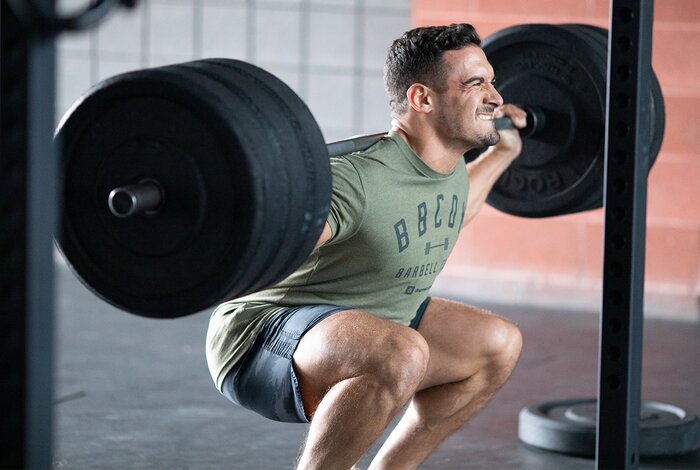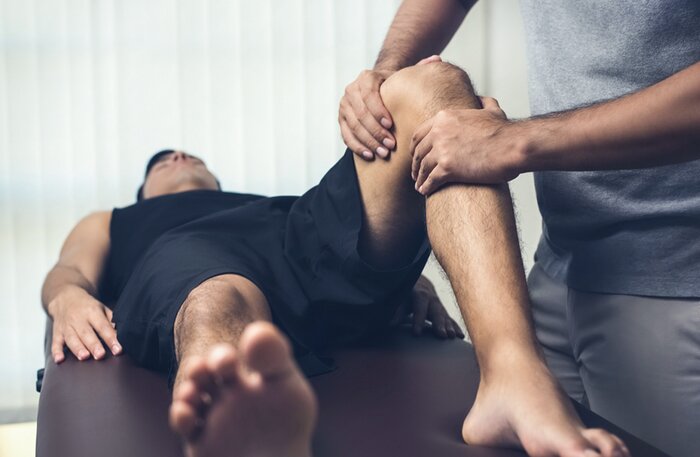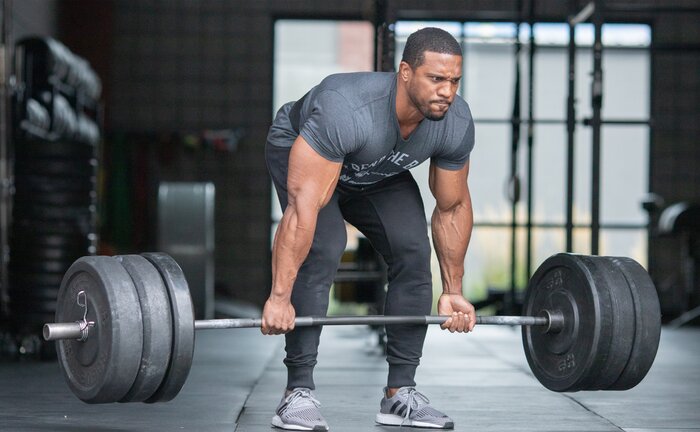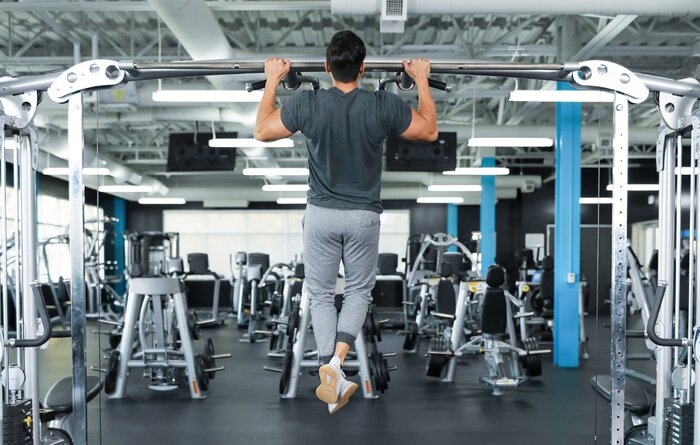Police recruits spend hours upon hours running. Depending on the academy and training officers, these runs can vary greatly, ranging from a brisk 1.5 miles to a will-shattering 7-10 miles, almost always in formation. Once the recruits graduate and hit the streets, however, they develop a new relationship with running. Officers who are more purpose-driven in their training find difficulty reconciling distance running with the demands of the job.
No matter what movies and TV would have you believe, if your foot pursuit stretches to 1.5 miles or beyond, something has gone gravely wrong. The pursuit—and the fight that follows—is more likely to be quick, dirty, and violent, which would suggest that sprints, limit strength (the amount of force you can exert in one all-out effort), and combat training should have higher priority in the gym. Why do so many officers-in-training still lace up their running shoes to pound the pavement every day? Are they limiting their survivability on the job? And how does this apply to combat-minded civilians?
Josh Bryant, M.S., CSCS, author of "Jailhouse Strong" and several other books on strength and conditioning, believes that running has its place, but tactical athletes—and those interested in training like them—quickly hit a point of diminishing returns when it comes to "putting in miles."
The Efficiency Factor
Whatever your job, the way you prioritize your training should match your training objectives if you expect to see results. If your goal is simply to develop a good, strong cardio base, Bryant has good news for you.
"Cardiovascular health and a good aerobic capacity can be developed rather quickly," he says. "In a couple months of training, people who are totally sedentary can hold their own in a 5K."
So, putting in your road work will pay off fairly quickly, but for tactical athletes, is it the best use of time?

"These same people would be laughed off the platform in a powerlifting meet," Bryant says of the couch-to-5K crowd. "Limit strength is much more difficult to develop than cardiovascular endurance. In fact, limit strength increases functional endurance. If you squat 500 pounds, you won't get as tired dragging a suspect who weighs 150 pounds as you would if your deadlift was 315 pounds. This is because even if your aerobic capacity is poor, you are operating at such a low percentage of your limit strength threshold."
That's right, being stronger inadvertently increases your cardio base. According to a 2007 study comparing different types of running, high-intensity interval training (HIIT) sprints—which are considered more anaerobic and power-building in nature—significantly improved subjects' VO2 max, which is normally considered an important variable for distance runners.[1]
So, if you allot four hours per week to training, and distance running eats up nearly half of that time, are you potentially hurting yourself in terms of on-the-job functional fitness?
Run, but Don't
"I am not a big fan of distance running for tactical athletes," Bryant says. "It can cause postural issues, deteriorate sprinting mechanics, and lead to adverse hormonal responses."
The problem is that few, if any, recruits are actually taught proper gait patterns for effective distance running, and they are given little time or nutrition to recover. The result is high-volume training performed frequently with improper form. This is akin to being thrown into the deep end of a swimming pool before being taught how to swim, not to mention a recipe for repetitive stress injuries.

While long runs may build character, they can have the opposite effect on the human body, leaving many recruits to wash out due to shin splints, arch strains, blisters, stress fractures, and other issues. Unfortunately, running is so engrained in the law enforcement culture, and in our fitness culture as a whole, that it's unlikely to go quietly into that good night.
Even so, the type of speed development required to go from zero-to-suspect speed can be hampered by running slowly for extended periods of time. A classic coaching adage to consider: Train slow, be slow.
The Running Alternative
"More people, including cops, would benefit from tempo runs, interval training, and for aerobic work, things like rucking and other lower-impact modalities," says Bryant.
This type of training improves strength and body composition and generally takes less time than long runs. It's easier on the body and may provide greater occupational benefits for the tactical athlete. Better to focus on building strength and staying lean, which will enable you to develop greater speed as a result.
"Keep in mind, for the average person, the best way to increase speed is to increase one's strength-to-bodyweight ratio. If you do not presently squat or deadlift 2.5 times your body weight, you will get faster by improving this ratio. This can happen two ways—get stronger and/or drop body fat."

Bryant conducted a survey of nearly 200 law enforcement officers to understand the physical demands of the work.
"A majority of those surveyed wore 20-29 pounds of external load," he says. "Some SWAT officers were over 60 pounds during deployments. Having greater amounts of strength and hypertrophy makes officers more proficient in performing occupational tasks with these external loads."
He believes that it's better for law enforcement officers to devote their time to developing speed and strength, which will make them more capable of facing the dangers encountered while on duty and with significantly less risk of career-crippling injury.
"The bottom line is that officers must be ready to go from being basically sedentary to multiple movement patterns with high force in an instant," he says. "Rarely will a police officer have to run beyond 100 yards. It's better to err on the side of training like an NFL running back than it is to train like a runner."
Split for Survivability
Try this sample workout split to make the most of the work (and workout) week. It's based on a three-on/four-off work schedule typical of law enforcement officers. You'll build strength, speed, and stamina without opening yourself unnecessarily to overuse injuries.
- Day 1: Strength training
- Day 2: Strongman cardio
- Day 3: On duty/active recovery
- Day 4: On duty/active recovery
- Day 5: On duty/active recovery
- Day 6: Combatives training
- Day 7: Sprints/accessory work
Day 1: Strength Training
Focus primarily on heavy compound movements such as squats, deadlifts, pull-ups, dips, lunges, step-ups, and overhead presses. Use a weighted vest of 20-30 pounds for movements such as pull-ups, dips, and step-ups to more closely mimic the demands of wearing an equipment-bearing vest on duty. Focus on maximum force output on the positive portion of each repetition in order to recruit more fast-twitch fibers. Choose a weight you can handle for approximately 8-10 reps, but stop short of failure at 6-8 reps and keep rest periods to a minute or less, which will enable you to perform more reps with good form while also elevating your metabolic rate post-workout.

Day 2: Strongman Cardio
This is a specific—and increasingly popular—type of training, but here we will use it to improve functional fitness. Use this day to hodgepodge unconventional exercises that force your body to work outside of its typical planes of movement. Think tire flips, sledge swings, farmer's walks, suitcase carries, sled pulls, and wheelbarrow walks. These types of movements, typically done for time or distance, will tax your central nervous system while also helping to jack your metabolism, build full-body strength, bolster stabilizer muscles, and fry your core. Carries, specifically, help to grow your traps and develop bone-crushing grip strength.
Days 3-5: Active Recovery on Duty
Most LEOs work three days in a row, so we'll use this as your "active" recovery. Days on patrol should be spent being as active as your job will allow, which means getting out of your car, taking foot beats, always choosing the stairs and stretching as often as possible. If you choose to mix in an extra workout on one of these days, try a few rounds on the heavy bag or a minimal-rest, high-volume session for a smaller body part. Both are ideal choices because you can get through them relatively quickly without overtaxing your central nervous system. Recovery is king, especially when symptoms of overtraining such as fatigue, strength decreases, and insomnia can have serious consequences at work.
Day 6: Combatives Training
Whether you're rolling on the mats in jujitsu class, sparring, or hitting the heavy bag, combatives training is essential for LEOs and self-defense-minded fitness enthusiasts. At a minimum, you should be practicing your defensive tactics once per week in order to develop and maintain these potentially life-saving skills.
Day 7: Sprints or Accessory Work
This is your get-fast day. Sprints help you build or maintain muscle mass while getting you measurably faster. Although intensity is relative—your top speed will be different from your training partner's—you should focus on 90-100 percent of your maximum speed on each sprint. Use mental tools to motivate you; for example, "I have to catch this armed suspect before he reaches the school." Take care to minimize injury, including a thorough general warm-up followed by a dynamic warm-up and a light sprint before tackling your max-effort sprints. For a sample program, try this 30-minute sprint workout. Sprints will provide a huge fat-blasting boost to your program while helping you to mitigate the wear and tear of long, monotonous runs.
Meet the most cutting-edge tactical fitness plan out there: 8-Week ACFT Training Plan. It’s designed to help Army soldiers pass the brutal Army Combat Fitness Test, but is equally great at getting any police officer, firefighter, or first responder prepped for whatever their job throws at them!
Reference
- Helgured, J., et al. (2007). Aerobic high-intensity intervals improve VO2max more than moderate training. Medicine & Science in Sports & Exercise, 39(4), 665-71.

